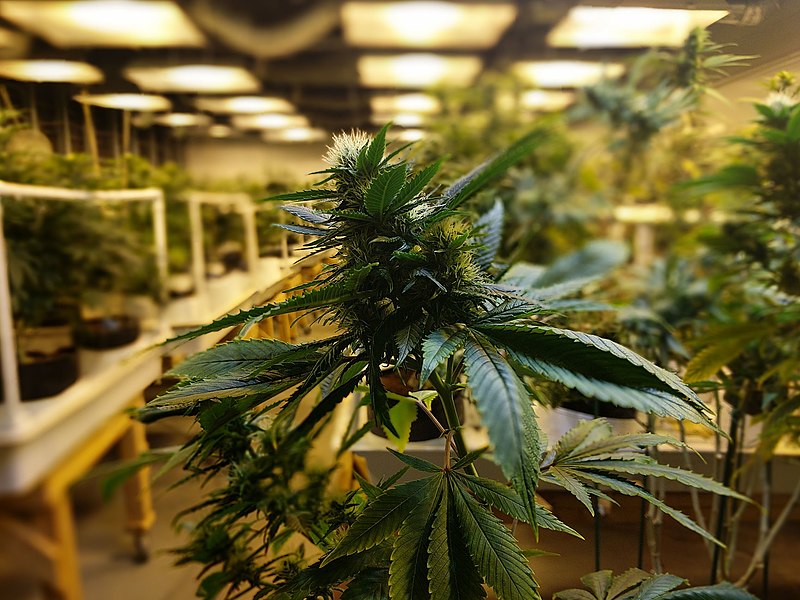Despite the development of advanced gas and smoke detection devices for the garage, fire accidents can occur on a regular

The typical Cannabis business model includes three major segments: a dispensary, where the cannabis is sold; a Commercial Grow Room and an infusion building, where THC is extracted from cannabis for use in other byproducts. Each facility has its own set of unique risks.
Because the cannabis industry is relatively new, building, fire and zoning authorities have difficulty to identify risks and develop code provisions to ensure public safety. Major violations recorded include electrical systems overload, noncompliant construction using unapproved cannabis extraction equipment and unapproved CO2 enrichment systems
Dispensaries
Dispensaries are same as usual retail storefronts. Due to the availability of cannabis inventory and cash on on-site, security is a big concern for dispensaries. The security routines, however, have proven to be in violation of egress codes, in many cases.
Commercial Grow Rooms
Plant cultivation locations have many safety concerns that are increasingly heavily regulated. Traditionally, greenhouses are regulated as U occupancies in the IBC, (International Building Code) ; however, due to higher hazards in a cannabis grow room communities are now classifying Cannabis Grow Rooms as FI occupancies. The F1 occupancy classification was determined based on high electric demand for grow lamps, fumigation operations, carbon dioxide (CO2) enrichment, mazelike room layouts, and the fact that many Grow Rooms are located in former warehouse tenancies that possibly cause inconvenience for other tenants.
Growing cannabis is labor-intensive; the occupant load of workers is higher than one would expect in a typical U occupancy greenhouse.
Cannabis Grow Rooms temperature and humidity levels are comparable to indoor swimming pool centers. Heath and humidity create an ideal environment for fungi and other undesirable microorganisms. Growers fumigate the premises, to mitigate the situation. The fumigation method of most concern is sulfur burners to control powdery mildew and CO2 fumigation to control pests. Sulfur burners heat elemental sulfur, creating sulfur dioxide. If inhaled, sulfur dioxide can create sulfuric acid in the presence of moisture and can burn the respiratory tract.
Cannabis plants emit a very strong unpleasant odor, and local authorities typically require ventilation systems to be installed such that any odors are prevented from leaving the facility. Installing a charcoal filter in the discharge path of the exhaust fans is the usual method to mitigate the concern.
Common Risk Problems
A wide variety of risks not necessarily seen in typical construction should be anticipated professionally in cannabis design:
The threat of Explosion and Fire: Cannabis facilities face a significant risk of fire or explosion.
Worker Safety: At Cannabis Grows Rooms, workers are subject to chemical exposure from fertilizers and pesticides, from sulfur dioxide as a result of fumigation, and from carbon dioxide asphyxiation.
Damage to Real Property: Many facilities that house cannabis grow rooms are frequently leased in most cases. As leased spaces, they are not designed to be used for commercial grow room. The environment required for a grow room can damage a structure built for other enterprises.
The conditions of these grow rooms are nearly identical to those of an indoor pool. Temperatures between 75º and 85°F and relative humidity [RH] values range between 60% and 65%. This high humidity level comes from the natural transpiration of the plants themselves. The high levels of relative humidity can lead to condensation on building components. High temperature and RH produce an ideal environment for the propagation of biological growth and an increased likelihood of building material deterioration. This can range from moldy drywall and insulation to deteriorated structural components. This can not only cause health issues from poor indoor air quality but can make the structure susceptible to further damage from the elements. Finally, with increased moisture also comes an accelerated rate of building material deterioration, including gypsum roofs, wood walls, and insulation.
Manufacture of Infused Byproduct
When cannabis is harvested, it is handled for sale in another facility. Majority of the type of product sold is cannabis flowers. However, the sale of concentrates is gaining a larger percentage of the total annual sales.
Different methods and types of apparatus can be used for extraction. Using a professional ventilation apparatus is required over the extraction process to capture any flammable vapors released, and equipment must be rated for heating flammable liquids.
Conclusion
While there have been significant strides made in the technical aspects of cannabis facilities design safety, issues regarding legal and business questions appear to be in uncertainty. The industry has only recently developed a consensus on design issues for the three different types of facilities utilized to grow, process, and deliver cannabis to the consumer. Grow room must maximize the plant growth while caring to avoid contamination and harm to the building. In any design project, employee safety and minimizing the impact of the facilities on the public must be among the major design objectives.
Overall, while a growth industry going forward, Cannabis Facilities are still relatively new and careful consideration of probable and unforeseen responsibilities should be taken for each design project.
We hope that this article has been helpful in your cannabis business. Allow us to team with you as early in the design process, to ensure professional Grow Rooms.
About Author
InnoDez